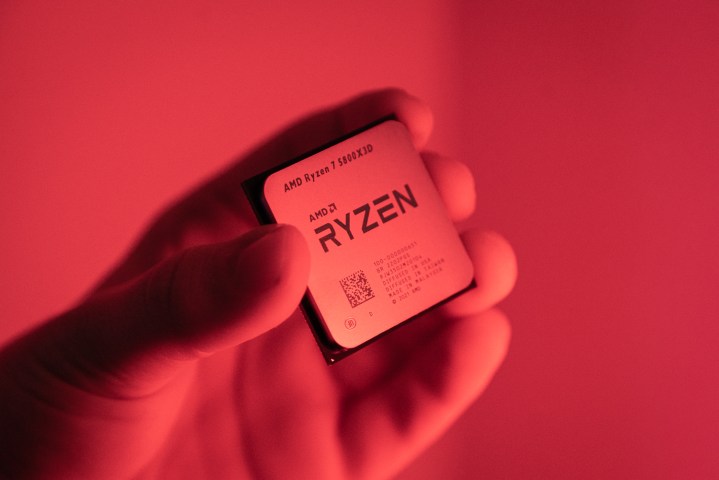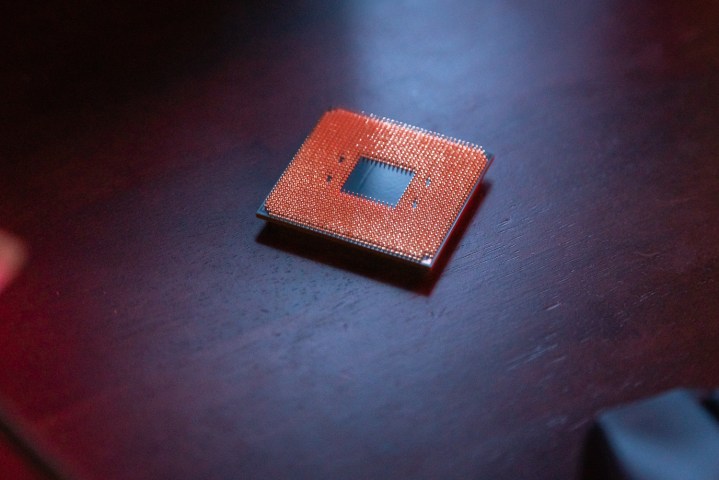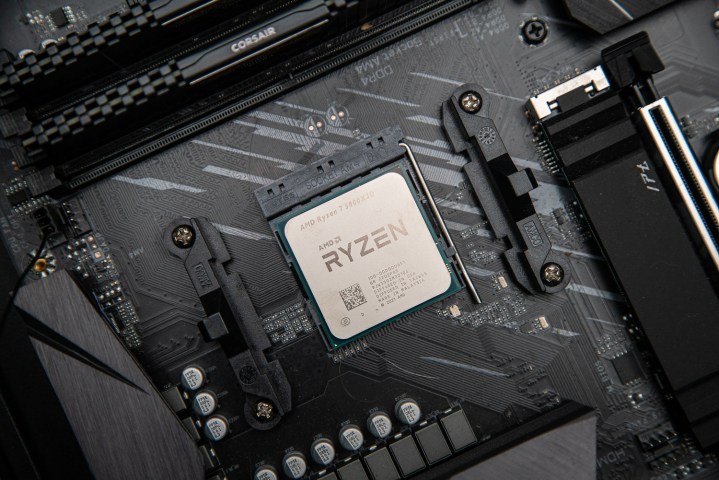Cache isn’t something PC gamers think nearly enough about. At least, that seems to be AMD’s thinking as of late.
With the release of 3D V-Cache on the Ryzen 7 5800X3D, though, AMD just proved its own point. The 5800X3D is the most powerful gaming CPU you can buy, and 3D V-Cache is to thank. But one question looms: Why?
Cache has always been important, but AMD didn’t decide to apply its 3D Hybrid Bond packaging to cache on just a hunch. After finishing my Ryzen 7 5800X3D review, I sat down with Robert Hallock, director of technical marketing at AMD, to understand what cache is doing in games, why it’s important, and why gaming was the perfect design goal for 2022’s most unique processor.
What’s the cache?

Before we talk about anything else, we need to talk about cache — in particular, what in the world CPU cache is doing when you play games. A cache is simple enough: It’s a superfast bit of memory on your CPU that can hold instructions. Hallock explained the importance of cache this way: “The more instructions you can keep local to the CPU, the less amount of time you have to spend going to get them from somewhere else.”
Time (or more accurately, latency) is what Hallock calls the “great governor of performance.” Your average frame rate is just an abstraction of latency, a shorthand that’s easier to understand than the amount of time it takes for each frame to render. That’s the point.
It’s the “great quest” of the hardware industry, according to Hallock, to either hide or remove latency to improve performance.
The CPU cache holds instructions that govern what your other components do, and in games, those instructions can change a lot. Randomness is what causes latency, as your CPU needs to push out instructions for the GPU to fetch a texture or character model (among dozens of other things).
More cache means that the CPU doesn’t need to fetch data from your system RAM, which could increase latency by 10 times or more.
That doesn’t mean more cache is inherently better for gaming. It largely depends on the game, but more importantly, when the game was made.
Three buckets

When it comes to defining the design goals of a processor like the Ryzen 7 5800X3D, Hallock says that games break down into three main buckets:
- Frequency sensitive — League of Legends, Civilization VI
- Latency sensitive — Fortnite, Forza Horizon 4
- GPU sensitive — Dying Light 2, Red Dead Redemption 2
Games are very demanding today, so the buckets above aren’t perfect. A game like Assassin’s Creed Valhalla is concerned with GPU, latency, and frequency, but it’s more limited by the power of your GPU, so it won’t benefit as much from 3D V-Cache. You can see that from some of my tests in the chart below.

Hallock was careful not to make any sweeping statements because what a game is sensitive to “doesn’t really go along genre lines.” The more important indicator is the age of the game. Hallock pointed to older titles like Counter-Strike: Global Offensive and Grand Theft Auto V as examples of older games that are typically more sensitive to frequency. Newer games like Far Cry 6 and Halo Infinite will typically see a larger benefit from more cache.
You can see that in the chart below, with the Ryzen 7 5800X3D offering a significant gain in performance over even the Ryzen 9 5950X in Far Cry 6.

The game’s application programming interface (API) is a huge influencer, too. DirectX 9-era games are typically more frequency sensitive, while newer DirectX 11 and DirectX 12 games better take advantage of cache. And APIs like Vulkan can make a massive difference. Hallock pointed to Dota 2 as an example: “As a result of its API change to Vulkan, [Dota 2] is hugely influenced by cache performance.”
Ultimately, though, the benefit from something like 3D V-Cache largely comes down to the type of games that are popular today. Newer APIs are better equipped to take advantage of things like 3D V-Cache, but it’s player randomness that drives the benefit. Multiplayer titles like Apex Legends are a good example here, where you could have “a chance encounter with an enemy or move from one place to the next because a firefight just broke out.”
“This is the kind of player behavior that forces a computer to change its mind,” Hallock says. As randomness becomes more deeply embedded in the games we play, the role of cache is to shift instructions to the correct spot to keep the latency as low as possible.
It’s not an idea out of left field, either. Looking at Ryzen 5000 processors, even the Ryzen 5 5600X sports 2MB more L3 cache than Intel’s Core i9-12900K. Different architectures handle cache, well, differently, but it’s clear that AMD has had this spec in mind. Consider that the $300 Ryzen 5 5600X gets close to the Intel flagship in gaming despite being less than half the price and sporting 10 fewer cores.
Post-frequency

There’s a big elephant in the room with the Ryzen 7 5800X3D: Frequency. It’s 200MHz slower than the Ryzen 7 5800X, and you can’t overclock it without some serious workarounds. But Hallock says we’re entering a time where frequency is less important, at least in the interim.
“The whole industry’s kind of been hovering around 5GHz-ish for a while. And we’re recognizing that. This idea of exploring interesting packaging technologies is an effort to end run that stalemate.”
Frequency is important, and Hallock says it sits alongside packaging and process as a powerful tool in the toolbox. Still, it’s true that we’re seeing less of a benefit from increased frequency. Look at the Core i9-12900KS as a prime example, where even a 300MHz boost offers little to no benefit in games.
“Will a couple extra hundred megahertz make a difference here? And I think you’re seeing indicators all over. The answer is no, not likely.”
Overclocking is a different matter, a case of compromise considering that many modern titles don’t scale with frequency in the way that older games do. It comes down to voltage and thermals, with the parts not offering enough headroom for safe, simple overclocking. Hallock says that AMD “felt that it would kind of be wrong not to do it” anyway.
It’s a trade-off that Hallock acknowledges, and over time, he says that AMD is “going to keep pushing that envelope,” and that the company intends to bring benefits like overclocking to 3D-stacked chips with future releases.
Looking forward

The Ryzen 7 5800X3D is a remarkable chip, designed from the ground up for the games we play today instead of the endless IPC (instructions per clock) chase that’s been going on for 30 years. And 3D V-Cache is just the first application of AMD’s 3D Hybrid Bond technology, which allows AMD to explore putting different modules on the same chip.
It’s an interesting product, but it’s also a read on the pulse of what’s important for PC gaming today. Hallock says that it could help people pause and look at what a high-performance gaming PC looks like in the future, because based on the performance of the Ryzen 7 5800X3D, it starts to look pretty different.
This article is part of ReSpec – an ongoing biweekly column that includes discussions, advice, and in-depth reporting on the tech behind PC gaming.





